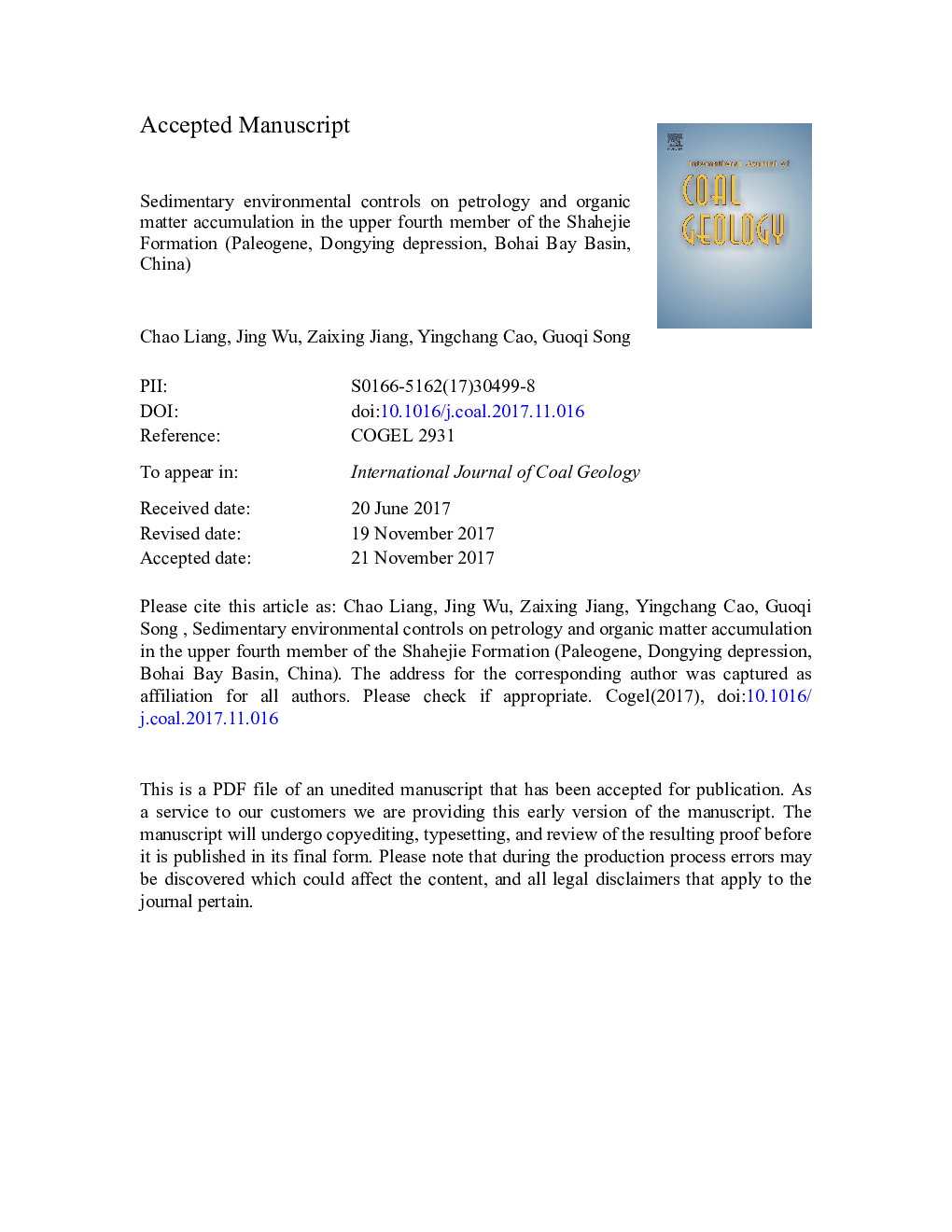| کد مقاله | کد نشریه | سال انتشار | مقاله انگلیسی | نسخه تمام متن |
|---|---|---|---|---|
| 8123580 | 1522517 | 2018 | 35 صفحه PDF | دانلود رایگان |
عنوان انگلیسی مقاله ISI
Sedimentary environmental controls on petrology and organic matter accumulation in the upper fourth member of the Shahejie Formation (Paleogene, Dongying depression, Bohai Bay Basin, China)
دانلود مقاله + سفارش ترجمه
دانلود مقاله ISI انگلیسی
رایگان برای ایرانیان
کلمات کلیدی
موضوعات مرتبط
مهندسی و علوم پایه
علوم زمین و سیارات
زمین شناسی اقتصادی
پیش نمایش صفحه اول مقاله

چکیده انگلیسی
The upper fourth member of the Eocene Shahejie Formation (Es4s) is a typical example of a Bohai Bay Basin lacustrine shale. These sedimentary units are characterized by markedly different mineral compositions compared to marine siliciclastic shales. Thus, understanding the characteristics and sedimentary environment of lacustrine shales enables analysis of their origin, enrichment of organic matter (OM), distribution of organic rich shales, and exploration targets for shale oil and gas. Based on thin sections and field emission scanning electron microscope observations from well core samples, combined with X-ray diffraction and geochemistry, the mineralogy, lithofacies, organic and geochemical characteristics as well as the sedimentary environment of the Es4s shale are analyzed in this paper. The results show that, across the study area, the Es4s shale is mainly composed of calcite, clay minerals, and quartz, but also contains subordinate dolomite, feldspar, pyrite, and anhydrite. On the basis of mineral composition, total organic carbon (TOC) content and sedimentary structures, eight lithofacies are identified. The TOC content of samples ranges between 0.15% and 11.4%, with an average of 2.27%, while OM primarily consists of Type I kerogen. Based on paleoclimate and paleosalinity data as well as redox conditions and primary productivity, the sedimentary environment of the Es4s shale can be further divided into four intervals: Intervals I, II, III, and IV, and these four intervals have large differences, rather than persistently warm-damp climate and reducing condition. The evolution of these intervals is also analyzed in detail in this study, and the controls on lithofacies and OM accumulation are also discussed. The results of this study suggest that the development of mineral compositions and frequent vertical lithofacies associations are strongly controlled by the cyclic evolution of the sedimentary environment. Thus, the accumulation of OM occurs as the result of a number of inter-connected factors including primary productivity, terrestrial inputs, and variation in oxidizing-reducing conditions. Across a given interval, these factors can either work together, or one can play a leading role.
ناشر
Database: Elsevier - ScienceDirect (ساینس دایرکت)
Journal: International Journal of Coal Geology - Volume 186, 1 February 2018, Pages 1-13
Journal: International Journal of Coal Geology - Volume 186, 1 February 2018, Pages 1-13
نویسندگان
Chao Liang, Jing Wu, Zaixing Jiang, Yingchang Cao, Guoqi Song,